#Linda Bassett
Text
82 notes
·
View notes
Text
Minor spoilers for s13e05 from My Weekly magazine…..
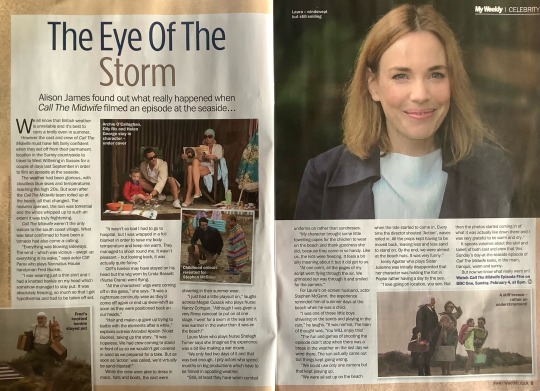
#call the midwife#shelagh turner#turnadette#patrick turner#laura main#stephen mcgann#fred buckle#cliff parisi#sister julienne#jenny agutter#phyllis crane#linda bassett#violet buckle#annabel apsion#nancy corrigan#megan Cusack#call the midwife spoilers
23 notes
·
View notes
Text
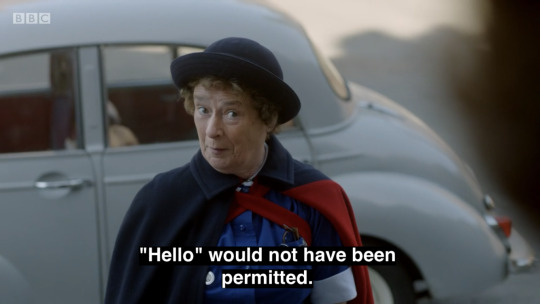
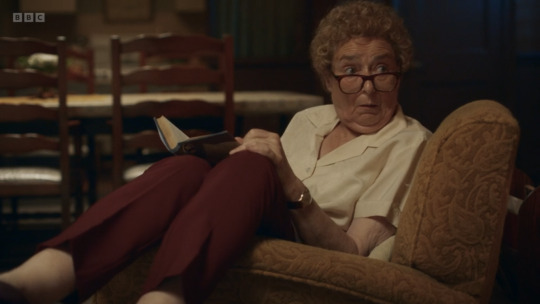
Call the Midwife: Phyllis Crane (Linda Bassett)
Series four episode two
Series twelve episode three
73 notes
·
View notes
Text
🚨⚠️ Spoiler warning (CtM s12) ⚠️🚨
Some behind the scenes images have dropped, seemingly from the 2022 Christmas Special (source)
It was too good not to caption:

Ugh yeah I know the text is kinda small 🔎 It’s been a while since I did anything like this 😆
#call the midwife#callthemidwife#spoilers#spoiler alert#s12 spoiler#sister julienne#jenny agutter#sister monica joan#judy parfitt#laura main#shelagh turner#phyllis crane#linda bassett#helen george#trixie franklin#georgie glen#millicent higgins#matthew aylward#olly rix
63 notes
·
View notes
Text
phyllis vs nothing the dog was the funniest scene so far this series. linda's delivery of "i found a dog, and he's pinched my cheese!" was PERFECT
#linda is SUCH a good actress and she's SO good at the comedy as well as the drama#phyllis is right up there with my fave characters#call the midwife#phyllis crane#ctm12#linda bassett#mine
35 notes
·
View notes
Text
youtube
After many, many years of not even thinking about editing a video, this happened. Oops.
2 notes
·
View notes
Text
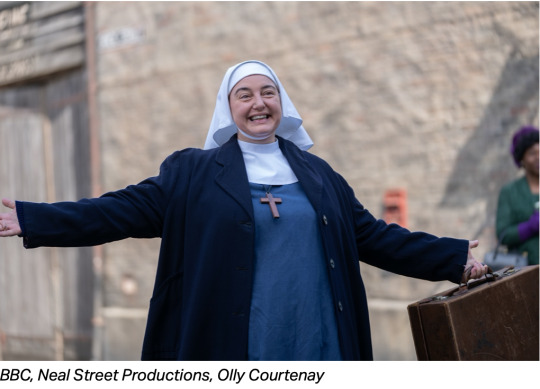

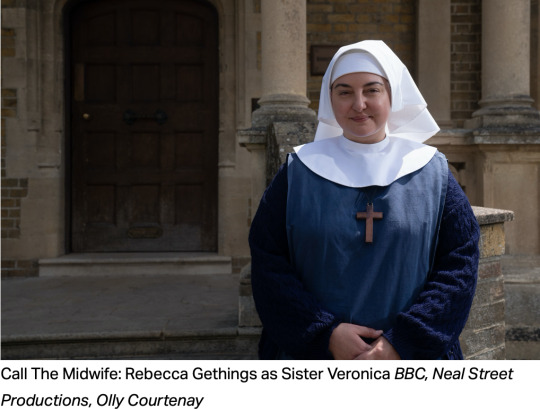
from Radio Times
26 notes
·
View notes
Text
Call the Midwife Christmas special
Call the Midwife Christmas special
While I’ve mostly skimmed the BBC’s big press release for its Christmas 2023 line-up, I have decided to grab the details for Call the Midwife. Elsewhere I’ve covered Ghosts and Death in Paradise, both of which the BBC has also covered separately.
Here’s what the nuns are up to this year — I do like the historic scene setting for 1968-69:
…two weeks before Christmas, with Apollo 8 poised to…

View On WordPress
#bbc#call the midwife#christmas#christopher harper#featured#francesca fullilove#helen george#jenny agutter#judy parfitt#linda bassett#megan cusack#olly rix#zephryn taitte
5 notes
·
View notes
Text
Call the Midwife - Magazine Round Up: 12x01-2
Here’s are CTM features and synopses from the recent UK TV magazines. I’ve included a few of the CS features if they also contain Series 12 spoilers, but otherwise did not include CS spoilers as it already aired in both the UK and US.
12x01 (+ 2022 CS)
TV Times (24 December - 6 January)
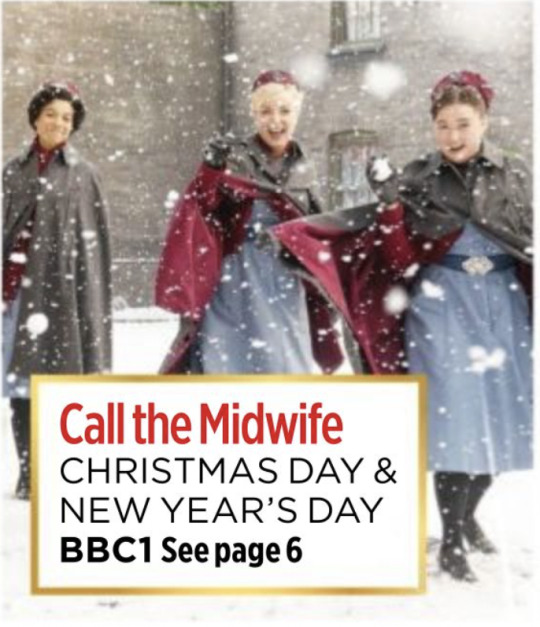





TV & Satellite (24 December - 6 January)

Radio Times (24 December - 6 January)
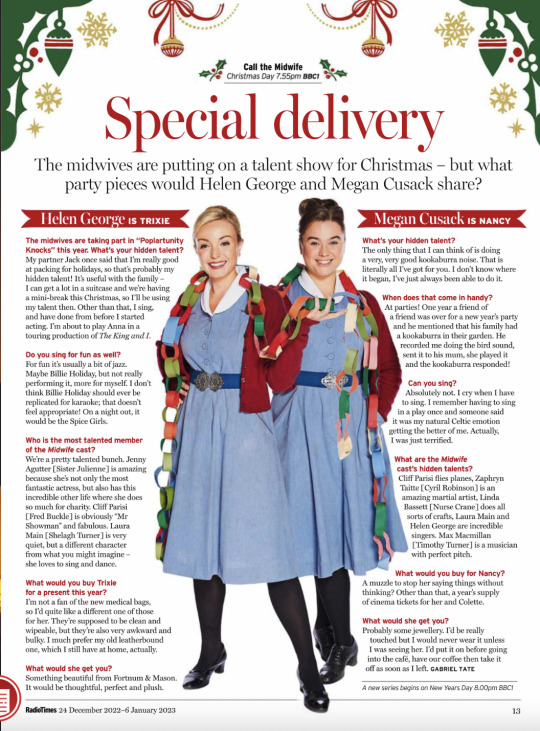
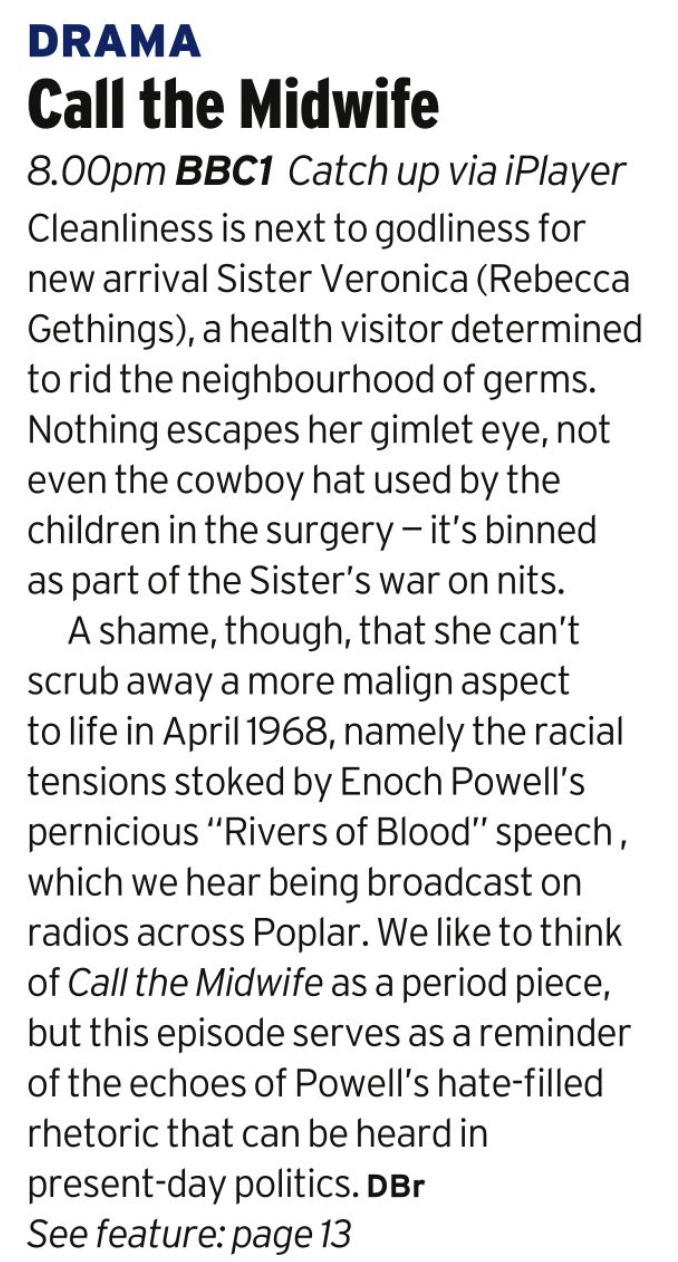
What’s on TV (24 December - 6 January)

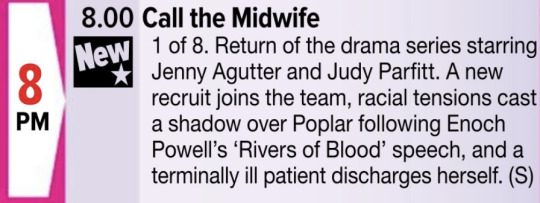
12x02
TV Times (7-13 January)


TV & Satellite (7-13 January)

What’s on TV (7-13 January)
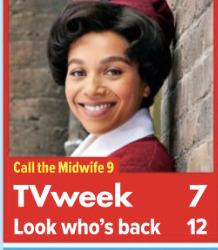
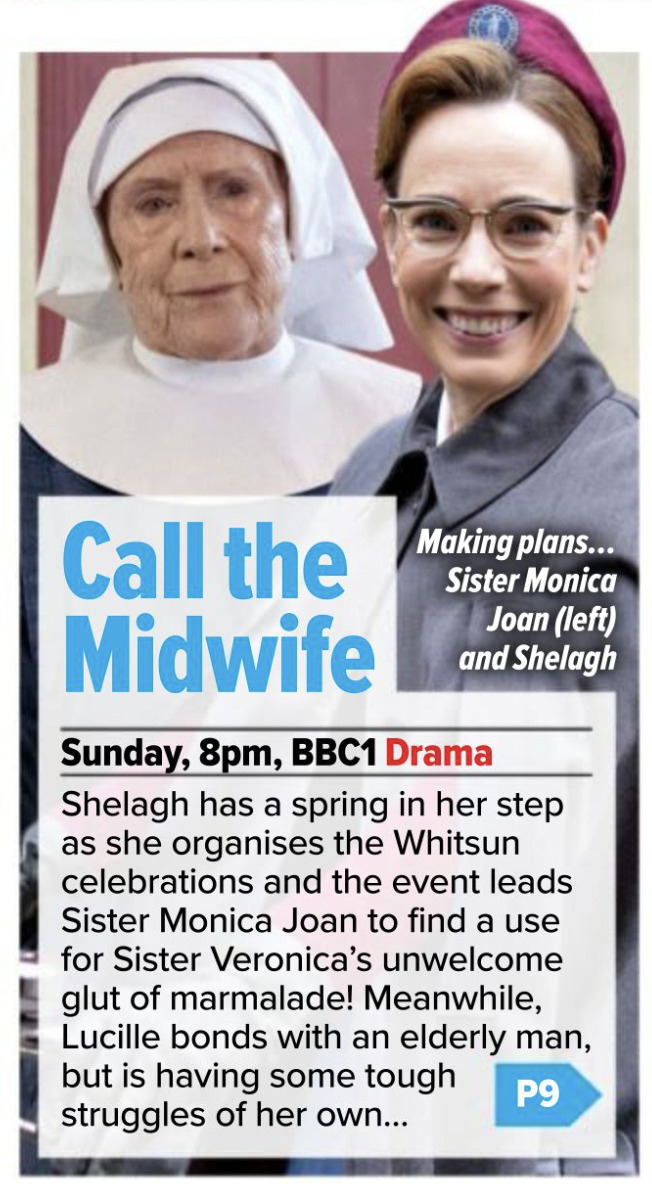



[The Radio Times (7-13 January) issue was not up at the time of originally posting this, it will be added to the post later]
#call the midwife#ctm spoilers#ctm magazines#ctm interviews#ctm 2022 cs#ctm s12#ctm 12x01#ctm 12x02#trixie franklin#lucille robinson#cyril robinson#helen george#linda bassett
7 notes
·
View notes
Text

#call the midwife#s12e08#helen george#trixie franklin#shelagh turner#laura main#linda bassett#nurse crane
136 notes
·
View notes
Text
Voting is open for this year’s TV choice awards. On the long list are:
Best Family Drama - Call the Midwife
Best Comedy Performance - Charlotte Richie (for Ghosts)
Best Actor - Daniel Laurie
Best Actress - Jenny Agutter, Linda Bassett, Leonie Elliot, Laura Main
#call the midwife#ctm#laura main#stephen mcgann#jenny agutter#linda bassett#charlotte ritchie#daniel Laurie#why do we have to choose??#🏴😜
14 notes
·
View notes
Text
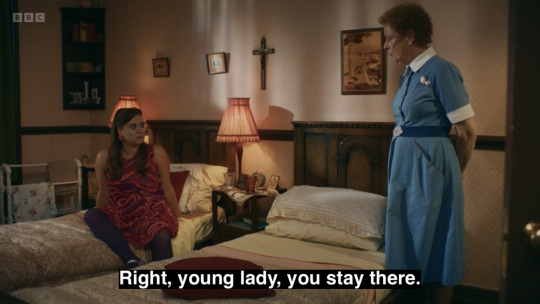
Call the Midwife: I honestly haven’t moved a muscle since this scene.
43 notes
·
View notes
Photo
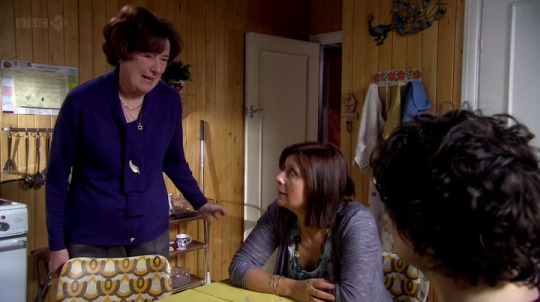


2 notes
·
View notes
Text



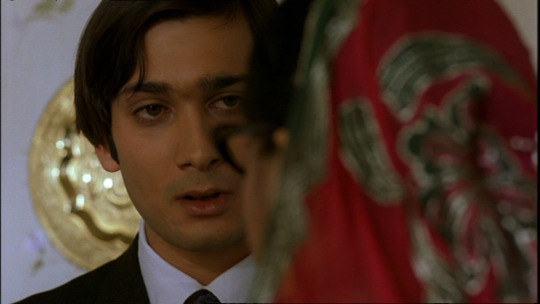
youtube
East Is East (1999)
My rating: 5/10
Look, I get that it's culturally significant and all, and it's pretty well put together, but man, is it not for me at all.
1 note
·
View note
Text
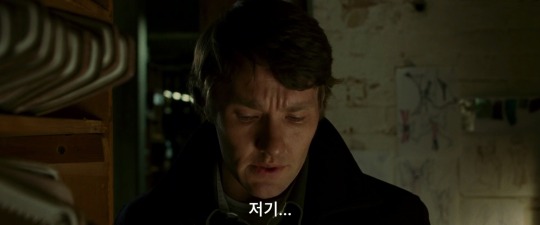
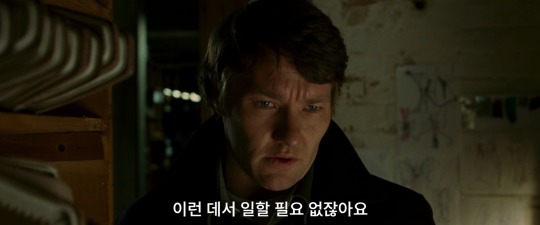
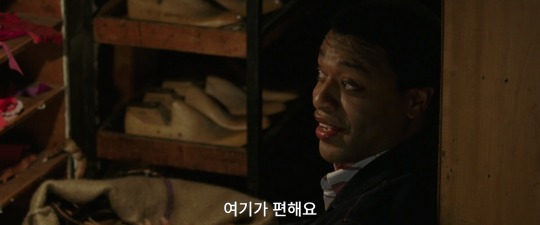


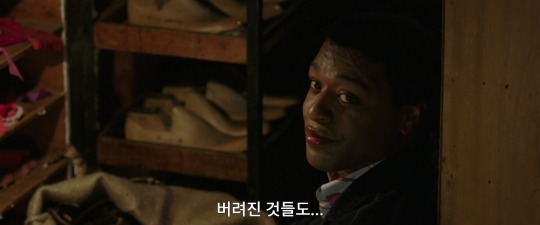
킨키 부츠(Kinky Boots, 2005)
ⓒWATCHA
1 note
·
View note
Text
"SENSE AND SENSIBILITY" (2008) Review

"SENSE AND SENSIBILITY" (2008) Review
The year 2008 marked the fourth adaptation of Jane Austen’s 1811 novel, "Sense and Sensibility". First aired on the BBC, this three-part miniseries had been adapted by Andrew Davies and directed by John Alexander.
"SENSE AND SENSIBILITY" told the story of the two older of three sisters and their financial and romantic travails in early 19th century England. Elinor and Marianne Dashwood, along with their mother and young sister, Margaret; found themselves homeless and in financial straits following the death of their father. Their elder half-brother, John Dashwood, had promised their father he would financially compensate them, since the Norland Park estate was entailed to the male heir. Unfortunately, John possessed the backbone of jelly and allowed his venal wife Fanny to convince him into withholding any financial assistance from the Dashwood women. Fanny received a shock when her younger brother, Edward Ferrars, paid a visit and ended up becoming romantically involved with Elinor. Before their romance could flourish; Elinor, her sisters and her mother were forced to leave Norland Park. They settled at a cottage in Devon, owned by Mrs. Dashwood’s cousin, Sir John Middleton.
Upon settling in Devon, the Dashwoods became acquainted with the gregarious Sir John, his chilly wife and his equally extroverted mother-in-law, Mrs. Jennings. Marianne attracted the attention of two potential suitors – Sir John’s neighbor and former Army comrade, Colonel Christopher Brandon; and a handsome young blade named John Willoughby. Being seventeen and emotionally volatile, Marianne preferred the handsome Willoughby over the more stoic Colonel Brandon. And Elinor began to wonder if she would ever lay eyes upon Edward Ferrars again.
Unlike Ang Lee and Emma Thompson’s 1995 adaptation of Austen’s novel, John Alexander and Andrew Davies had decided to be a little more faithful to Austen’s novel. They included Lady Middleton, the autocratic Mrs. Ferrars and both Steele sisters – Lucy and Anne – to the story. They also included Edward Ferrars’ brief visit to the Dashwoods’ cottage, the dinner party at Mrs. Ferrars’ London house and a contrite Willoughby’s conversation with Elinor. But for me, being faithful to a literary source does not guarantee a superior production. If Alexander and Davies called themselves creating a production more faithful and superior to the 1995 movie, I do not believe they had succeeded. I am not saying that this ”SENSE AND SENSIBILITY” was a terrible production. On the contrary, I believe it was first-rate. I simply believe that the 1995 movie was a better adaptation.
This three-part miniseries had a lot going for it. Both Davies and Alexander beautifully captured most of the heart of soul of Austen’s tale. And aside from a few scenes, it was wonderfully paced. ”SENSE AND SENSIBILITY” captured the financial and social dilemma faced by the Dashwood females, upon the family patriarch’s death. The miniseries’ style permeated with warmth, solidity and color. The production designs created by James Merifield did an excellent job in sending viewers back to early 19th century England. But I must give kudos to cinematographer Sean Bobbitt, who received a well deserved Emmy nomination for his beautiful photography. The Devon, Hertfordshire and Surrey countryside looked rich and lush in color. I also enjoyed Michele Clapton’s colorful costumes, which earned a BAFTA nomination. Were they historically accurate? I do not know. I am not an expert in early 19th century fashion. However, I do have a question. Was ”SENSE AND SENSIBILITY” set during the decade of 1800-1809? Or was it set between 1810 and 1819? According to the family tree briefly shown in the following photo, the movie was set around 1800-1801:

There were some aspects of ”SENSE AND SENSIBILITY” that did not appeal to me. As much as I had enjoyed Merifield’s production designs, I found it disappointing that the majority of the London sequences featured interior shots. Which meant that viewers failed to get a truly rich view of early 19th century London. But most of my quibbles were about a few scenes that struck me as unnecessary. The miniseries opened with a young couple making love in the candlelight. Viewers easily surmised the identities of the pair – John Willoughby and Colonel Brandon’s young ward, Eliza. Perhaps this was Davies’ way of foreshadowing Willoughby’s character and his near seduction of Marianne. This was the first scene I found unnecessary and heavy-handed. There are some stories in which the use of foreshadowing as a literary device work very well. This particular scene failed to work for me. Another scene that struck me as unnecessary was Edward Ferrars’ brief visit to Barton Cottage. This scene was lifted from the novel and was used to foreshadow Elinor’s discovery of his engagement to Lucy Steele. Again, the use of foreshadow failed to work for me. I would have preferred that the audience’s knowledge of the Edward-Lucy engagement had been revealed as a complete surprise to them, as well as to Elinor.
Two more scenes also failed to impress me. Austen’s novel had hinted a duel between Willoughby and Brandon over the former’s seduction of young Eliza. Davies’ screenplay included the duel, after Willoughby’s rejection of Marianne and the birth of his and Eliza’s child. This duel would have served better following Willoughby’s seduction. In fact, I wish that Davies had not included it at all. For a brief moment, I found myself confused on whether the duel was fought over Eliza or Marianne. The scene also seemed to be an indication of Davies and Alexander’s attempt to inject some overt masculinity into Austen’s tale. The last scene that Davies carried over from the novel featured Willoughby’s expression of remorse to Elinor, over his treatment of Marianne. I must admit that I found that scene a little contrived and unnecessary. Willoughby’s reasons behind his abandonment of Marianne and his embarrassment at the assembly ball seemed pretty obvious to me. And in the 1995 version, the expression on Greg Wise’s face fully expressed Willoughby’s remorse more effectively than any of Austen’s (or Davies’) words.
Despite my misgivings, I must admit that ”SENSE AND SENSIBILITY” possessed a first-rate cast. Both Hattie Morahan and Charity Wakefield gave solid performances as the story’s two heroines – Elinor and Marianne Dashwood. Morahan nicely portrayed the sober and level-headed aspects of Elinor’s personality. Yet at the same time, she conveyed subtle hints of the character’s emotions behind the mask. I found it difficult to believe that Morahan’s Elinor was 19 to 20 years-old in this story. She looked and behaved like a person who was at least 5 to 10 years older. Morahan had a tendency to utilize this ”deer-in-the-headlights” expression, whenever Elinor was surprised. Wakefield gave a decent performance as the volatile Marianne. She portrayed the character as written by Austen – an emotional and thoughtless adolescent with a kind heart. Were young females in their late teens really expected to behave in a mature manner, consistently? My only problem with Wakefield was there were a few moments when her performance seemed mechanical with hardly any style or true skill.
The miniseries received fine support from the likes of Janet Teer as the emotional Mrs. Dashwood, Mark Williams as the jovial Sir John Middleton, Jean Marsh as Mrs. Ferrars, Mark Gatiss as the vacuous John Dashwood and young Lucy Boynton as Margaret Dashwood. In his first scene, Dan Stevens seemed to hint that his interpretation of Edward Ferrars might prove to be a little livelier than past interpretations. It was a hint that failed to flourish. His Edward proved to be just as mild. At least his performance was adequate. When the miniseries first aired in Britain nearly three years ago, the media had declared Dominic Cooper as the new sex symbol of British costume drama. After seeing his performance as John Willoughby, I found this hard to swallow. But he did give a first-rate performance. But there were performances that failed to impress me. One, I had a problem with the Steele sisters. Anna Madeley’s performance as the subtle, yet catty Lucy Steele seemed perfectly fine with me. But I found Daisy Haggard’s broadly comic take on Anne Steele ridiculously overdone. And I never could understand why one Steele sister spoke with a well-bred accent (Lucy) and the other with a regional accent that strongly hinted of the lower classes. Very inconsistent. I also had a problem with Rosanna Lavelle as Sir John’s cold wife, Lady Middleton. She barely seemed to exist. In fact, I never understood why Davies did not follow Emma Thompson’s example by deleting the character altogether. Linda Bassett gave a friendly performance as Mrs. Jennings, Lady Middleton’s mother. But her portrayal lacked that deliciously meddlesome trait that prevailed in Austen’s novel and the 1995 movie. And I also found Bassett’s accent questionable. I could not tell whether her character was from amongst the upper or middle class.
At least two performances in ”SENSE AND SENSIBILITY” managed to impress me. One of those performances belonged to Claire Skinner, who portrayed the Dashwood sisters’ bitchy sister-in-law, Fanny Ferrars Dashwood. Skinner was truly superb as the venal and manipulative Fanny, who seemed more than determined to not only rule her husband, but also make her sisters-in-law miserable for the sake of her ego. My favorite Fanny scene featured that delicious montage in which she wore down John’s determination to help his sisters and stepmother financially. The other outstanding performance came from David Morrissey’s portrayal of the stoic Colonel Brandon. As much as I admire Morrissey’s skills as an actor, I have found some of his performances a little too theatrical at times. I certainly cannot say the same about his performance in ”SENSE AND SENSIBILITY”. He perfectly captured the quiet nuance of his character; and at the same time, expressed Brandon’s passion for Marianne through facial expressions and body language.
”SENSE AND SENSIBILITY” may have been marred by scenes that I found unnecessary and lacked a witty sense of humor and something of an edge; but it still turned out to be an intelligent and solid adaptation of Austen’s novel. And fans of Austen’s novel can thank Andrew Davies’ script, John Alexander’s direction, Sean Bobbitt’s photography and a solid cast lead by Hattie Morahan and Charity Wakefield.

#sense and sensibility#sense and sensibility 2008#hattie morahan#charity wakefield#dan stevens#david morrissey#dominic cooper#janet mcteer#lucy boynton#anna madeley#claire skinner#mark gatiss#jane austen#jean marsh#linda bassett#mark williams#tim mcmullan#daisy haggard
1 note
·
View note